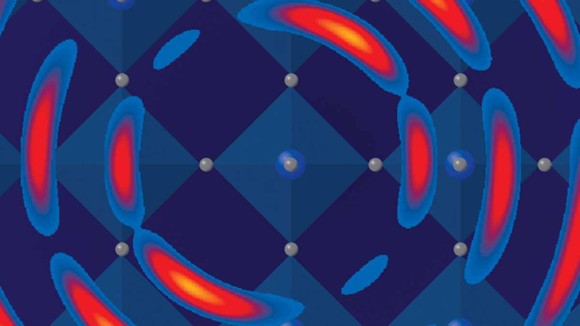Quantum materials
Research on quantum materials brings together scientists working on a variety of problems at the frontiers of physics, materials science and engineering. The properties of these systems are uniquely defined by quantum mechanical effects that remain manifest at high temperatures and macroscopic length scales. In turn, these effects can be driven and manipulated to provide novel functionalities and, it is hoped, transformative technologies.
Of course, at a fundamental level the description of all materials is rooted in quantum mechanics. But looking at materials through the prism of the electron wavefunction provides a perspective through which properties such as its entanglement and topology take centre stage. These give rise to a rich variety of quantum states and phases that, due to their extreme sensitivity to external perturbations and ability to support switchable electrical currents with little or no energy loss, can be harnessed for practical applications.
This joint Nature Physics and Nature Materials Insight explores some of the principal lines of enquiry currently being pursued in the study of quantum materials: the physics they give rise to, their synthesis and design, the control over their properties, and the functionality that emerges from these properties. The focus is kept deliberately at the nexus between physics and materials science and, while the aim of this collection is to provide an overview that can serve as a reference to both specialists and non-specialists alike, it is by no means exhaustive — the field is simply too rich and diverse for that.
In addition to defining our conceptual understanding of quantum materials and identifying where their practical potential may lie, it is equally relevant to highlight some of the tools that have made the rise of this field possible. For practitioners seeking to push the boundaries of our knowledge, actually observing what is going on inside a material is the first step to understanding why. Two Commentaries describing the strides forward that have been made in the techniques available to peer inside quantum materials — we chose to cover real-space imaging and photoemission spectroscopy, but there are many other techniques we could have chosen to highlight — underscore this fact.
Above all else, we hope that this Insight conveys the excitement surrounding quantum materials, and will prove an enriching reflection of the field — one that inspires further reading and, ideally, further work.
Finally, we would like to extend our sincere thanks to our sponsors — the Gordon and Betty Moore Foundation and the Simons Foundation — for their support of this project and for helping with its distribution to the wider research community. As always, however, Nature Research carries sole responsibility for all its editorial content.
David Ciudad, Senior Editor, Nature Materials
Luke Fleet, Senior Editor, Nature Physics
Maria Maragkou, Senior Editor, Nature Materials
Andrea Taroni, Chief Editor, Nature Physics



